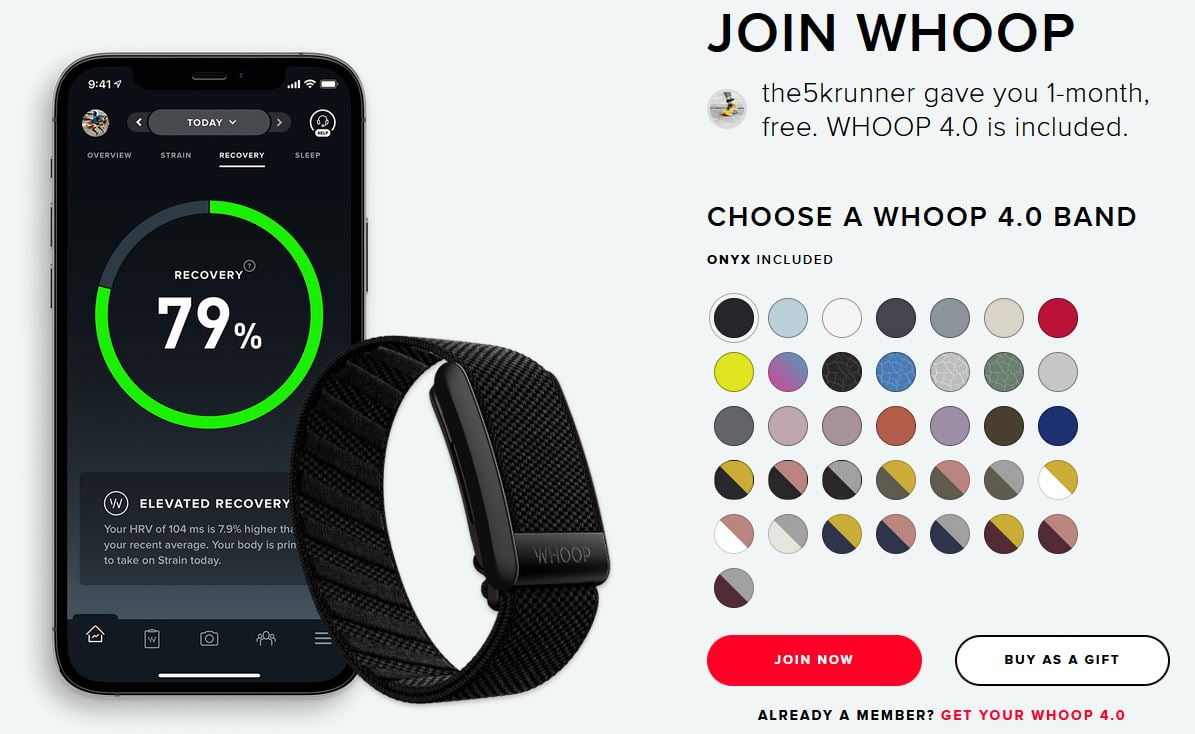Whoop Fitness Tracker: A Comprehensive Guide for USA Consumers
In the ever-growing world of fitness trackers, Whoop has emerged as a game-changer. Known for its advanced features and subscription-based model, it has become a go-to choice for professional athletes and fitness enthusiasts alike. But how does Whoop compare to other popular fitness trackers in the U.S. market? Let’s dive into the details to find out if it’s worth your investment.
What is Whoop?
Whoop is a fitness tracker designed to provide in-depth health and performance insights. Unlike traditional trackers with screens and step counts, Whoop focuses on metrics like:Heart Rate Variability (HRV)

- Strain Tracking: Measures how much stress your body takes during workouts.
- Recovery Score: Helps you understand how well your body has recovered overnight.
- Sleep Analysis: Tracks sleep stages and efficiency.
Key Features:
- Continuous Monitoring: Tracks heart rate and other metrics 24/7.
- Subscription-Based Model: Requires a monthly membership for access to the app’s insights.
- Lightweight and Screen-Free: Prioritizes data over aesthetics.
How Does Whoop Compare to Other Fitness Trackers?
1. Whoop vs Fitbit
:max_bytes(150000):strip_icc()/Web_4000-vwt-product-whoop-vs-fitbit-sarah-felbin-01-d40e1fe9a48f4768830562647582acdc.jpg)
| Feature | Whoop | Fitbit (e.g., Versa 4) |
|---|---|---|
| Design | Minimal, screen-free | Stylish, with AMOLED display |
| Metrics Tracked | HRV, strain, recovery | Steps, HR, SpO2, calories |
| Subscription | Mandatory ($30/month) | Optional (Premium: $10/month) |
| Battery Life | ~5 days | ~6 days |
| Price | Free with subscription | ~$229 (one-time cost) |
Verdict: Fitbit offers more versatility for casual users, while Whoop is better suited for performance-focused individuals.
2. Whoop vs Apple Watch

| Feature | Whoop | Apple Watch (Series 9) |
|---|---|---|
| Design | Minimal, screen-free | Premium design, Retina display |
| Metrics Tracked | HRV, strain, recovery | HR, ECG, SpO2, activity rings |
| Subscription | Mandatory ($30/month) | Optional (Fitness+: $9.99/month) |
| Battery Life | ~5 days | ~18 hours |
| Price | Free with subscription | Starts at $399 |
Verdict: The Apple Watch is ideal for users who want an all-in-one smartwatch. Whoop focuses entirely on fitness and recovery insights.
3. Whoop vs Garmin

| Feature | Whoop | Garmin (e.g., Forerunner 265) |
|---|---|---|
| Design | Minimal, screen-free | Rugged, with touchscreen |
| Metrics Tracked | HRV, strain, recovery | Advanced GPS, VO2 Max, HR |
| Subscription | Mandatory ($30/month) | None |
| Battery Life | ~5 days | ~14 days |
| Price | Free with subscription | ~$449 |
Verdict: Garmin is a better choice for outdoor adventurers and runners, while Whoop excels in recovery and daily strain tracking.
Pros and Cons of Whoop

Pros:
- Advanced Metrics: Detailed analysis of recovery, strain, and sleep.
- Lightweight Design: Comfortable for 24/7 wear.
- Community Features: Compare stats with friends or teams.
Cons:
- Subscription Model: Ongoing cost of $30/month.
- No Screen: Requires a smartphone to view data.
- High Learning Curve: Metrics may be overwhelming for casual users.
Enhancements to Make Whoop Experience Better

- Visual Dashboard: Include images of Whoop’s mobile app interface showing recovery, strain, and sleep metrics.
- Infographics: Add a graphic illustrating Whoop’s unique features compared to Fitbit, Apple Watch, and Garmin.
- Affiliate Links: Suggest a link to purchase Whoop from official website or Amazon with CTA buttons like “Buy Now” or “Explore Whoop Deals.”
Is Whoop Worth It for USA Consumers?
Whoop’s unique selling point is its focus on recovery and strain, making it perfect for:

- Athletes aiming to optimize performance.
- Fitness enthusiasts seeking in-depth data.
- Individuals who value recovery insights over step counts.
For casual users or those on a budget, alternatives like Fitbit or Garmin may offer better value without the recurring subscription cost.
Final Thoughts
Whoop is revolutionizing the fitness tracker market with its emphasis on recovery and strain metrics. However, its subscription model and lack of a screen make it a niche product tailored for serious fitness enthusiasts. If you’re in the U.S. and are passionate about tracking your performance and recovery, Whoop might just be the tool you need.
Reader Engagement:
“Curious about whether Whoop is the right fitness tracker for you? Share your fitness goals in the comments below, and let’s discuss!”